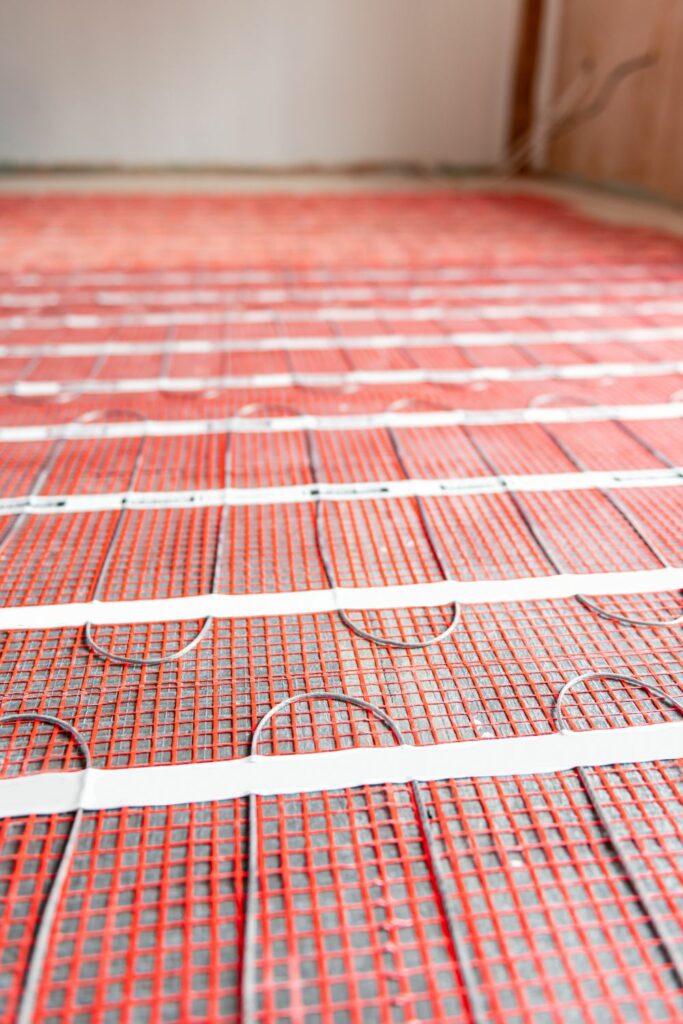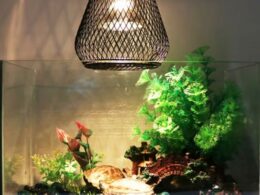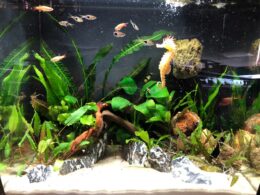In this article Show
Both the reptile and plant worlds are fascinating in their own right, but what happens when they intersect unexpectedly? Today, we’re exploring a question that might have crossed your mind: “Can you use a reptile heat mat for plants?”
Whether you’re looking to optimize your indoor garden or simply curious, this post is for you. We’ll explore the ins and outs of reptile heat mats and whether they can be a game-changer for your plants. Stick around to find out!
What is a Reptile Heat Mat?

A reptile heat mat, also known as an under-tank heater, is designed to provide a controlled heat source for reptile enclosures. These mats are typically placed under or on the side of a reptile’s tank to create a warm area, mimicking the natural heat they would experience in the wild.
The primary goal is to help regulate the reptile’s body temperature, which is crucial for their digestion, metabolism, and overall well-being.
The Importance of Heat for Plant Growth
Heat is pivotal in plants’ life cycle, especially regarding seed germination and early growth stages. Just like reptiles, plants also have specific temperature requirements that must be met for optimal growth. For seeds to germinate successfully, they often require a consistent and warm temperature range. This is where heat mats for plants usually come into play.
These mats are commonly used in indoor gardening setups to provide the necessary warmth that encourages seed germination and root development. They can also benefit tropical plants that are accustomed to warmer climates. By maintaining a consistent temperature, heat mats help speed up the germination process and promote healthier, more robust plants.
Similarities Between Reptile Heat Mats and Plant Heat Mats
At first glance, reptile heat mats and plant heat mats might seem like they serve entirely different purposes. However, they share some key similarities that make the idea of using one for the other worth considering.
1. Temperature Range
Both types of mats are designed to provide a controlled heat source within a specific temperature range. While the exact temperatures may vary, they generally fall within a range that can be beneficial for both reptiles and plants.
2. Heat Distribution
Another common feature is the even distribution of heat. Quality heat mats, whether designed for reptiles or plants, aim to provide a uniform heat distribution to avoid hot spots that could harm your pet or plant.
3. Energy Efficiency
Both reptile and plant heat mats are generally energy-efficient, consuming minimal electricity. This makes them a cost-effective option for maintaining the required temperature over extended periods.
Differences Between Reptile Heat Mats and Plant Heat Mats

While reptile and plant heat mats share some similarities, there are also key differences that you should be aware of before using one for the other purpose.
1. Material
Reptile heat mats are often made with materials designed to withstand the wear and tear of a reptile’s environment, including potential clawing or biting. Plant heat mats, on the other hand, are usually designed to be water-resistant to accommodate the moist conditions often found in plant growing setups.
2. Safety Features
Plant heat mats often come with built-in thermostats or temperature controls to ensure the mat doesn’t get too hot for the plants. Reptile heat mats may lack this feature, as reptile owners usually monitor temperatures manually or purchase a separate thermostat.
3. Temperature Control
Plant heat mats are often designed to operate within a narrower temperature range suitable for seed germination and plant growth. Reptile heat mats may offer a broader temperature range to mimic a reptile’s natural habitat, which could be too hot for some plants.
Pros and Cons of Using a Reptile Heat Mat for Plants
If you’re contemplating using a reptile heat mat for your plants, weighing the pros and cons can help you make an informed decision.
PROS
- Cost-Effectiveness: If you already own a reptile heat mat, using it for plants could save you the cost of buying a separate plant heat mat.
- Availability: Reptile heat mats are widely available in pet stores, making them easy to find and purchase.
- Versatility: Many reptile heat mats offer a range of temperatures, giving you more control over the heat settings.
CONS
- Lack of Thermostat: Most reptile heat mats don’t come with a built-in thermostat, which means you’ll need to monitor the temperature closely to ensure it’s suitable for your plants.
- Material Concerns: Reptile heat mats are not always water-resistant, posing a potential risk when used in a moist plant environment.
- Potential Overheating: The broader temperature range of reptile heat mats could lead to overheating, which may harm sensitive plants.
Safety Precautions
If you decide to use a reptile heat mat for your plants, it’s crucial to take some safety measures to ensure the well-being of your green friends.
1. Monitor Temperature
Always keep an eye on the temperature. Consider investing in a separate thermostat or a temperature monitor to ensure the heat mat stays within a safe range for your plants.
2. Water Resistance
Since reptile heat mats may not be designed to be water-resistant, make sure to place a barrier between the mat and any water source to prevent electrical hazards.
3. Placement
Be cautious about where you place the heat mat. Ensure it’s on a flat, stable surface and away from any flammable materials.
4. Test Before Use
Before placing your plants on the heat mat, test it for a few hours to ensure they maintain a consistent temperature and don’t overheat.
5. Read Instructions
Always read the manufacturer’s instructions for both the heat mat and your plants to ensure you’re not exposing either to conditions they can’t handle.
How to Use a Reptile Heat Mat for Plants (Step-by-Step Guide)

If you’ve decided to give it a try, here’s a straightforward guide on how to set up and use a reptile heat mat for your plants.
Step 1: Choose the Right Location
Find a flat, stable surface where you can place the heat mat. Make sure it’s near an electrical outlet but away from water sources and flammable materials.
Step 2: Test the Heat Mat
Before placing any plants on it, plug in the heat mat and let it run for a few hours to ensure it maintains a consistent temperature.
Step 3: Add a Barrier (Optional)
If your reptile heat mat isn’t water-resistant, consider placing a water-resistant barrier between the mat and the plant containers.
Step 4: Place the Plants
Once you’re confident the heat mat is safe and stable, place your plant containers on top of it.
Step 5: Monitor Temperature
Use a thermostat or temperature monitor to keep track of the heat mat’s temperature. Adjust as necessary to keep it within the optimal range for your plants.
Step 6: Water Carefully
When watering your plants, be cautious to avoid any water spilling onto the heat mat, especially if it’s not water-resistant.
Step 7: Observe and Adjust
Keep an eye on your plant’s growth and adjust the temperature settings or the plants’ placement as needed.
Alternatives to Using a Reptile Heat Mat for Plants
While using a reptile heat mat for plants can be a viable option, it’s not the only way to provide your plants with the warmth they need. Here are some alternatives you might consider:
1. Seedling Heat Mats
These are specifically designed for plants and often come with built-in thermostats, making them a more straightforward choice for gardeners.
2. Incandescent Lights
Some indoor gardeners use incandescent lights placed close to the plants as a heat source. However, this method is less energy-efficient.
3. Radiant Floor Heating
If you’re looking for a more permanent solution and are willing to invest, radiant floor heating can provide consistent warmth for an entire indoor garden.
4. DIY Solutions
Some gardeners use DIY methods like a warm water bath to provide temporary heat for seed germination.
5. Greenhouse
A small indoor greenhouse can help maintain higher temperatures, especially if combined with other heat sources.
Conclusion
So, can you use a reptile heat mat for plants? The answer is yes but with some caveats. While reptile heat mats share similarities with plant heat mats, such as temperature range and heat distribution, there are also key differences like material and safety features. If you decide to go this route, be sure to take the necessary safety precautions and monitor the temperature closely.
Whether you’re an indoor gardener looking for cost-effective solutions or someone who’s just curious about the overlap between reptile and plant care, we hope this guide has been informative. If you have any more questions or experiences to share, feel free to leave a comment below!









